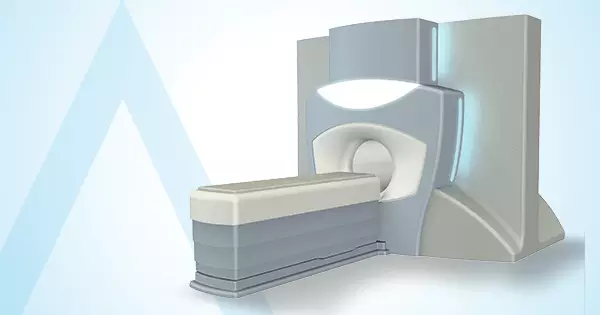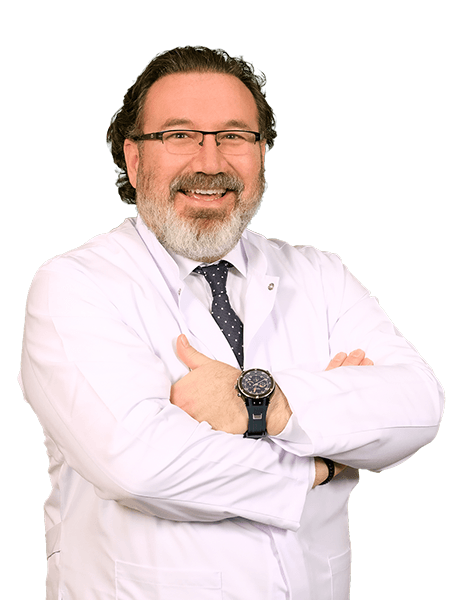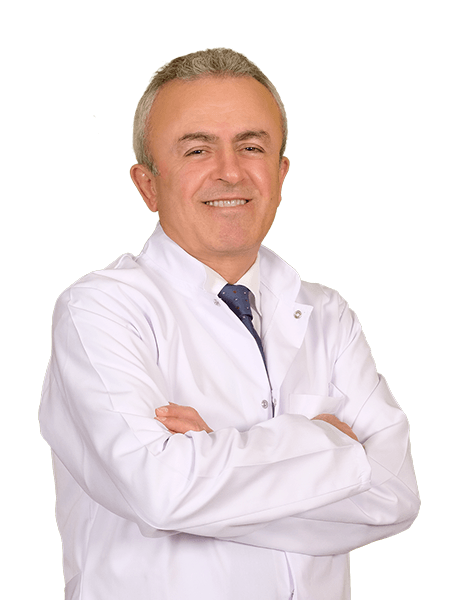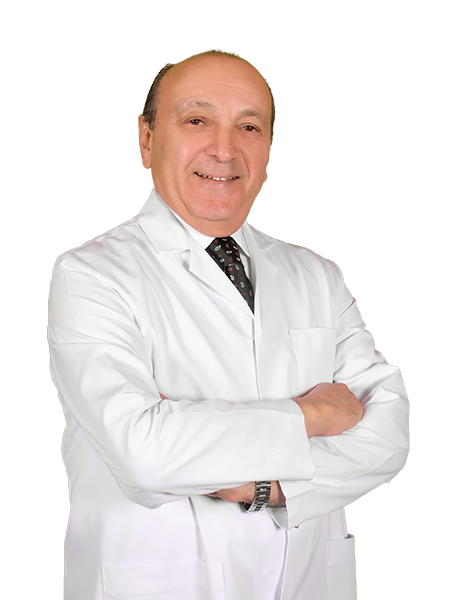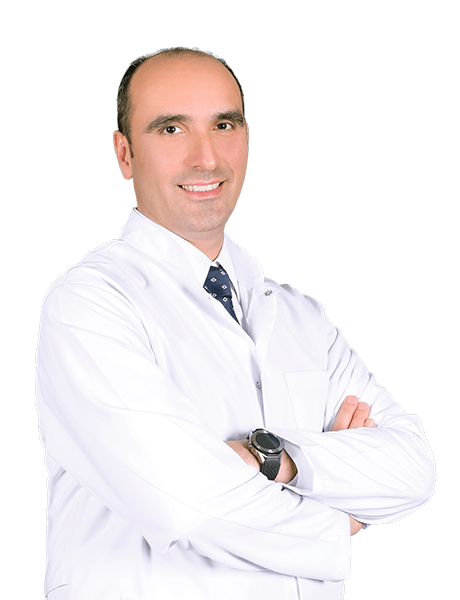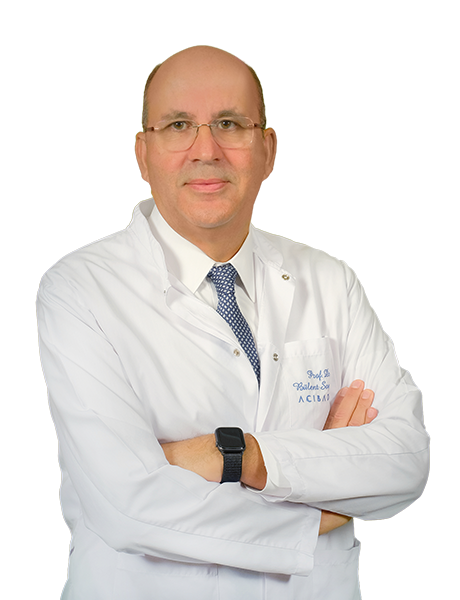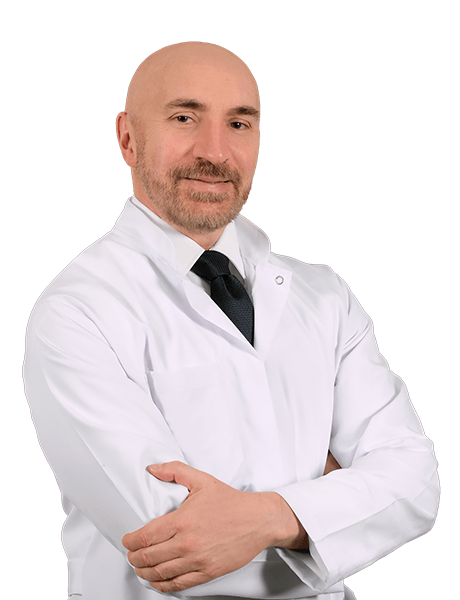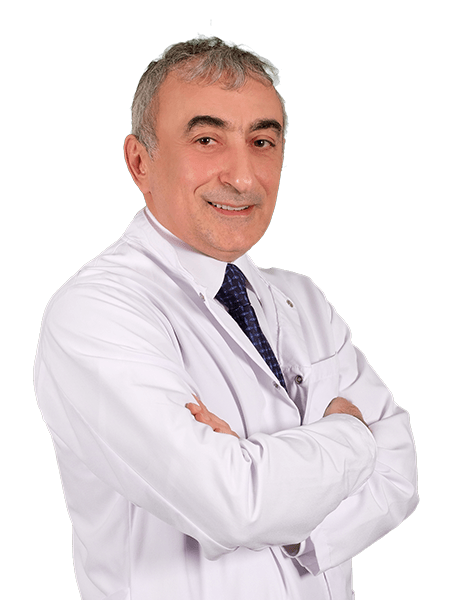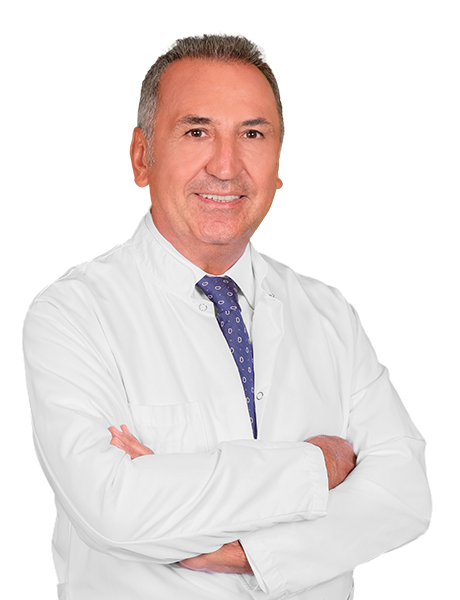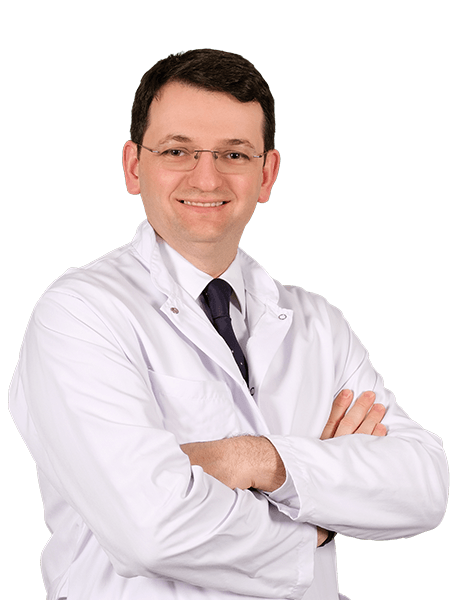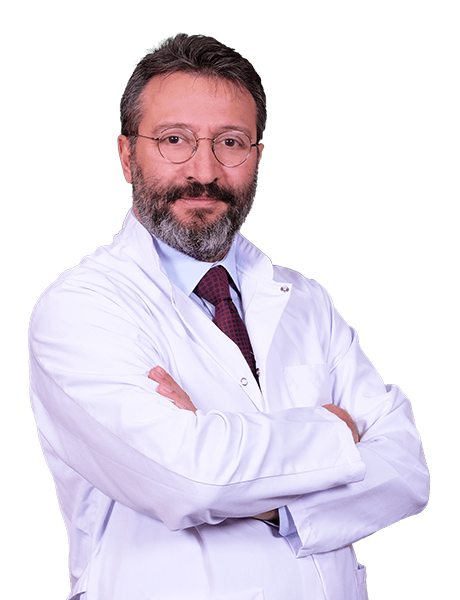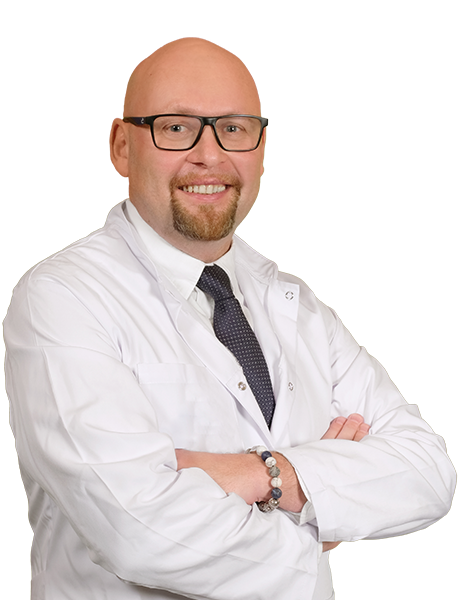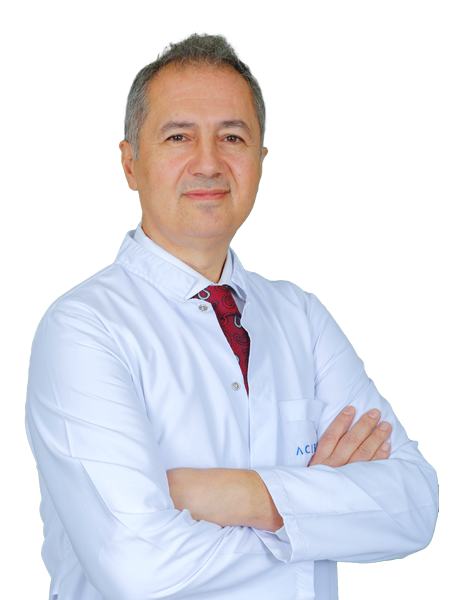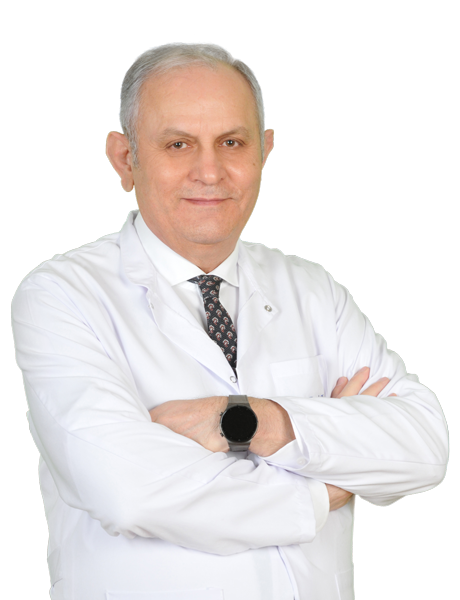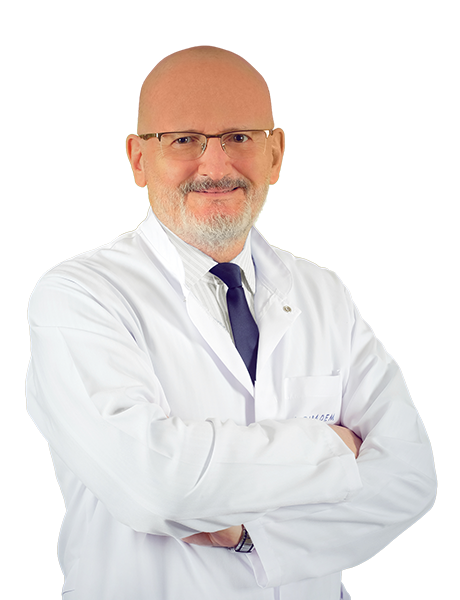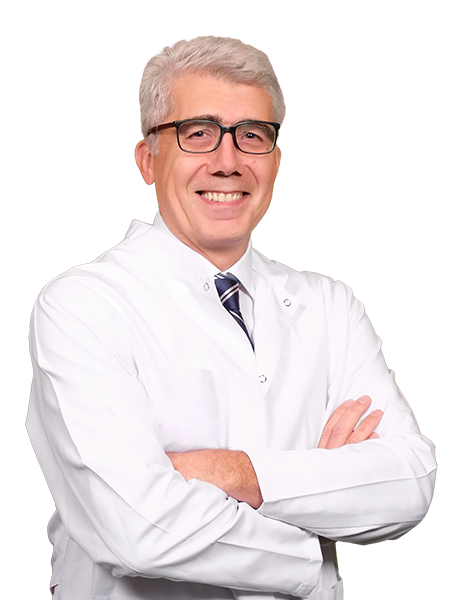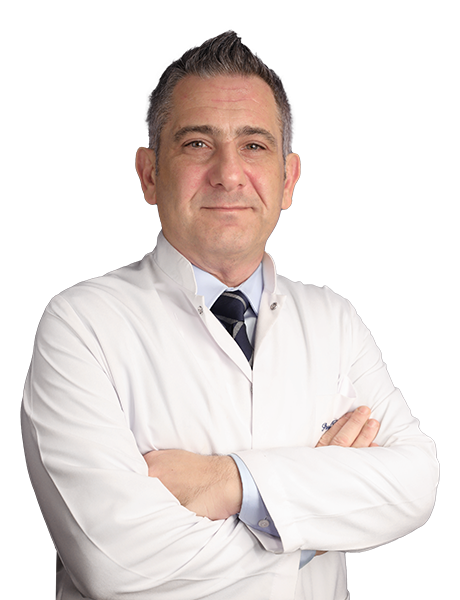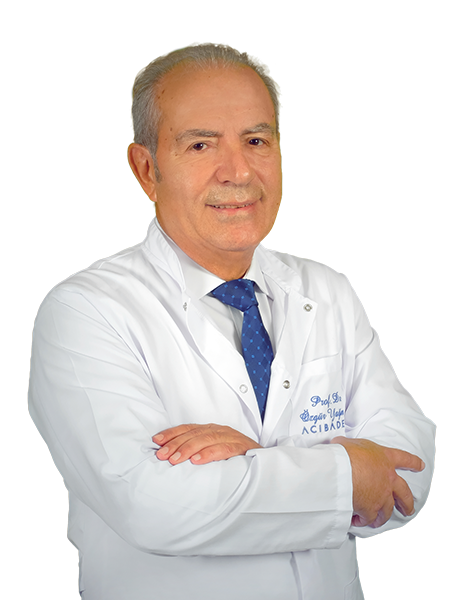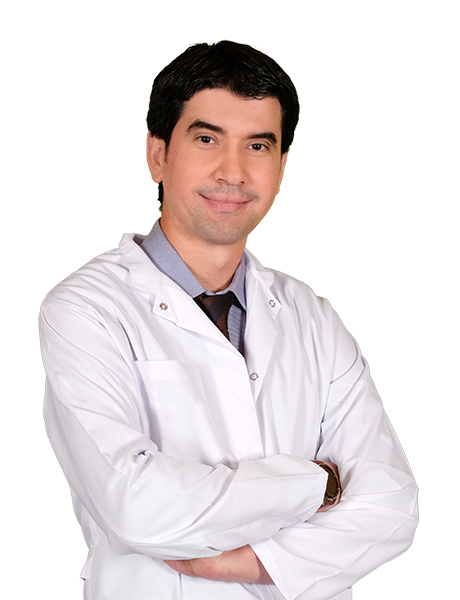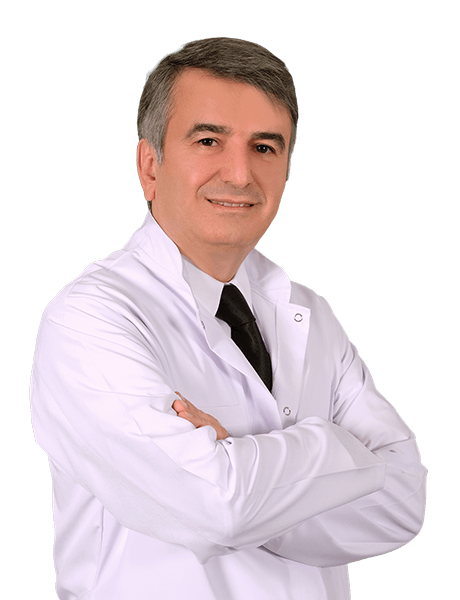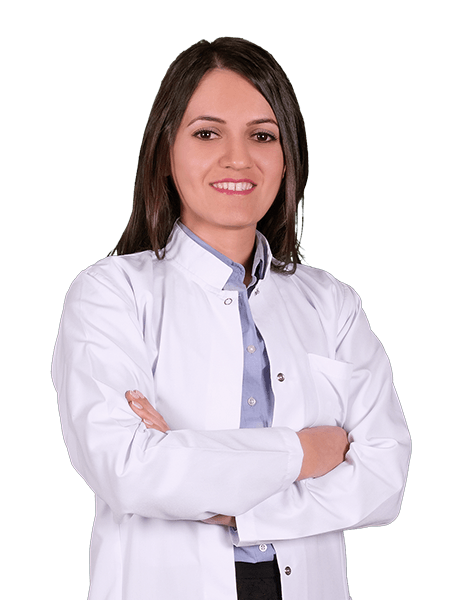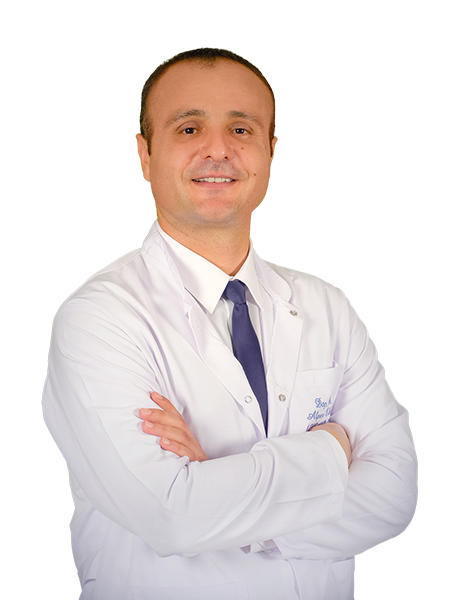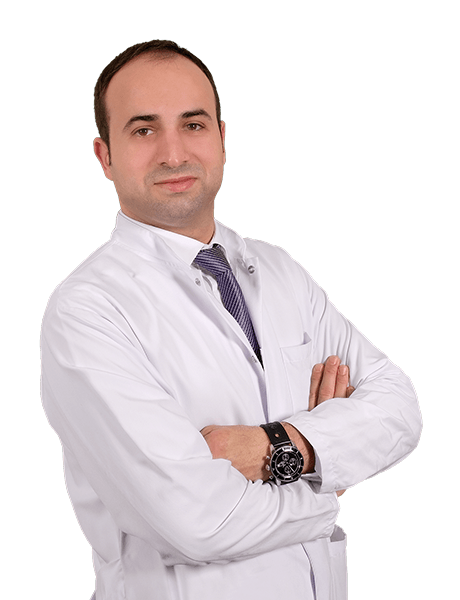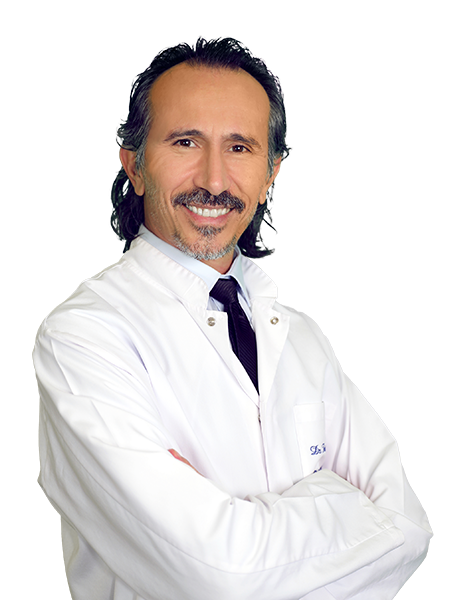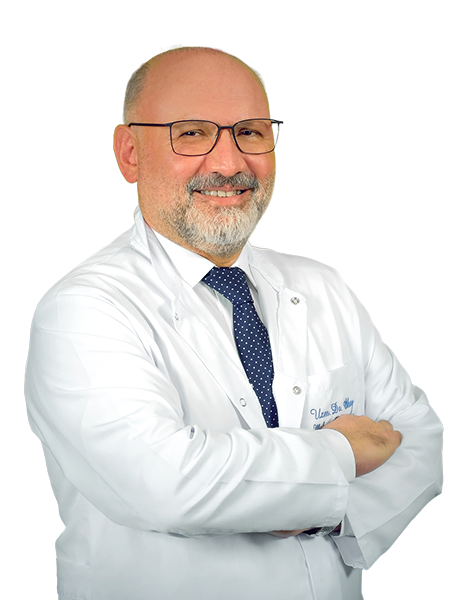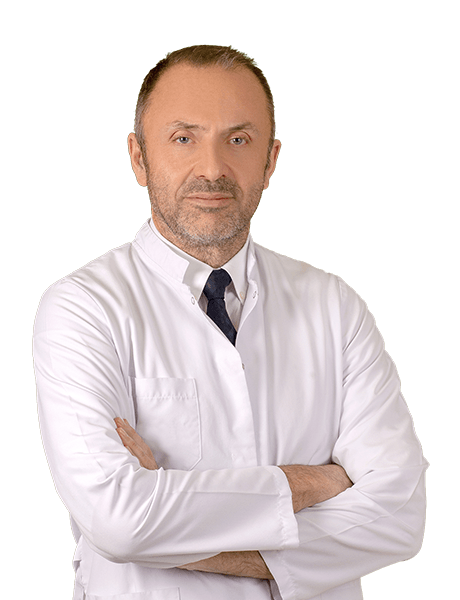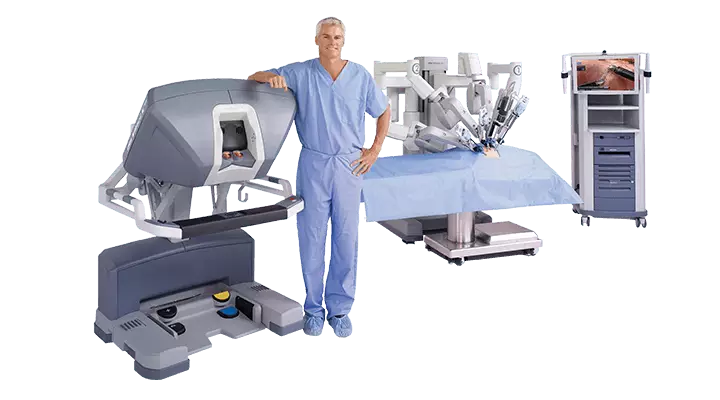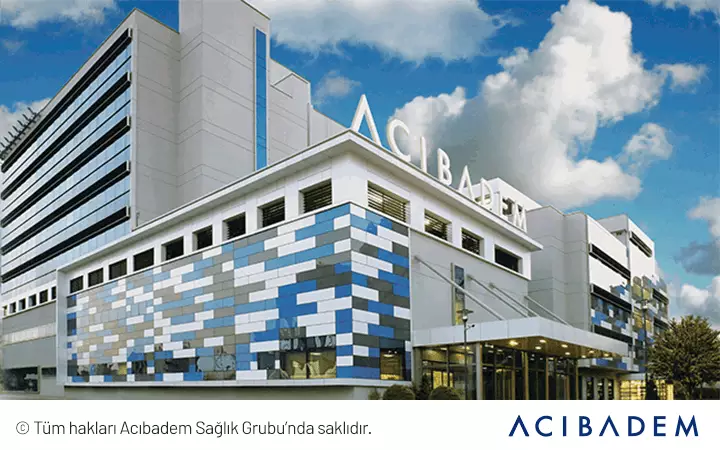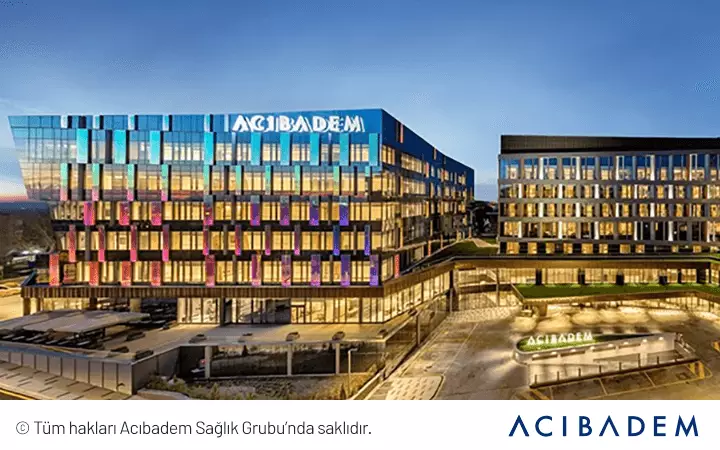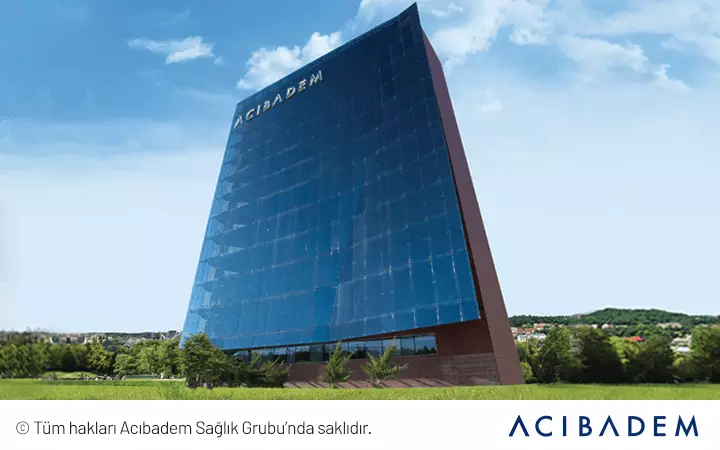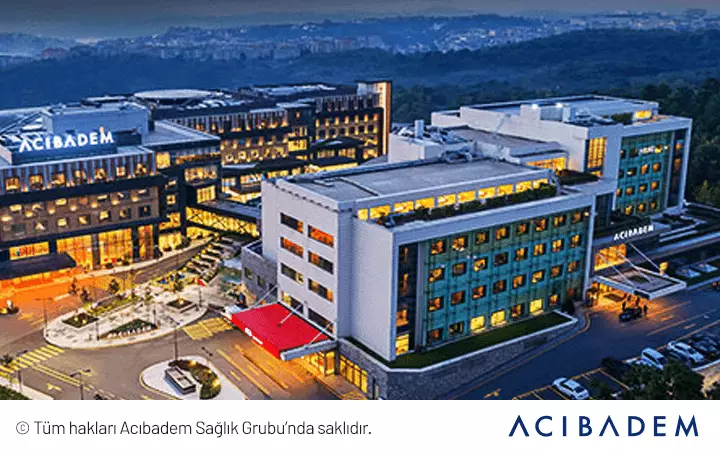In da Vinci Surgical Robotic system, the surgeon performs surgeries through small incisions. The surgeon performs the surgery by operating a console.
Surgical instruments of da Vinci robot simultaneously fulfill the surgeon’s commands that are transmitted from the console. Another surgeon who stays nearby the patient helps the surgeon who uses the console.
Robot-assisted surgery is performed using thin tubes, called “port, " similar to those used in laparoscopic surgery.
Robot-assisted Surgery in Urology
Urology is among departments where surgical robotics is commonly used. Surgeons prefer da Vinci for many urologic surgeries, especially radical prostatectomy (removal of prostate gland).
Urologic Operations performed with da Vinci:
- Robot-assisted Prostate Cancer Surgery
- Robot-assisted Renal Cancer Surgery
- Robot-assisted Pyeloplasty – Surgery for Stenotic Ureteropelvic Junction
- Other operations
Robot-assisted Surgery in Cardiovascular Surgery
Cardiovascular surgery techniques are considered, when modifications of life style and other treatment modalities do not result in recovery.
Cardiovascular surgery is among surgical areas, where surgical robotics is very commonly and widely used. The most common ones of these surgeries include: repair of mitral valve; coronary artery bypass grafting (especially for coronary arteries located on the ventral surface); rhythm disorders; repair of heart valves; correction of holes; and problems in right and left atria.
Robotic-assisted Surgery in General Surgery
Surgical robotics is used in general surgery for a wide range of operations.
Robot-assisted Colorectal Surgery
da Vinci can be used for surgical management of many colorectal diseases, especially including colorectal cancers, diverticula and inflammatory bowel disease. In rectal surgery, it ensures protection of the nerves located nearby the surgical site.
Robot-assisted Obesity Surgery
Gastric bypass gets the first rank among obesity surgeries performed with da Vinci. This technique aims reduced volume of stomach along with bypassing a part of intestines in order to decrease absorption of nutrients.
Robotic-assisted Surgery in Gynecology
In gynecologic surgery, “da Vinci” can be used for cancer surgeries, removal of uterus (hysterectomy) and excision of large myomas.
Robotic-assisted surgery is most commonly used for following conditions in gynecology; endometrial and cervical cancers; hysterectomy (removal of uterus); removal of large and multiple myomas (myomectomy); sacrocolpohysteropexy (sling surgery for prolapsed vagina or uterus); and Fallopian tube (a canal lying between ovaries and uterus) surgery.
Robotic-assisted Surgery in ENT
Today, da Vinci can also be used for otorhinolaryngologic surgeries. The technique is called Transoral Robotic Surgery (TORS) that aims excision of benign or malignant tumors, which begin in mouth cavity, larynx, tongue and tonsils.
Robotic-assisted surgical technique allows transoral approach – the native entry hole of the body – and thus, no incision is required. Robotic-assisted surgery technique enables surgeons carry out operations in this sensitive and narrow area, where numerous nerves and blood vessels are located, thanks to magnified images and surgical instruments with advanced movement skills.
For otorhinolaryngologic procedures carried out with da Vinci, 2 thin arms and a camera are used rather than 4 arms used in other surgical procedures. Laser headpieces can, sometimes, be attached to these arms, when required.
Robotic Surgery in Thyroid Diseases
The incisions made for operating on the thyroid gland with two lobes located at both sides of the trachea can be cosmetically unpleasant for some people.
The only prerequisite for this surgery is body mass index (weight divided by the square of height) below 30. da Vinci allows surgeons access to the thyroid gland in the neck through the armpit and many thyroid surgeries can be performed with surgical robotics, excluding severe goiters. Since the incision is made in the armpit, no incision scar is seen on the neck of these patients.
In robotic-assisted thyroid surgeries, absence of incision on the neck eliminates the cosmetic concerns, but the risk of laryngeal nerve injury can also be prevented.
Three-Dimensional Camera
Da Vinci robotic surgical system has two cameras, each transmitting images to eyes separately. Thus, the surgeon uses the console to perform the surgery on a three dimensional image that is quite similar to eyesight. Moreover, these cameras can magnify the surgical site by 10 to 12 times.
Surgical Instruments
Instruments equipped on arms of the surgical robotics system can be defined as small instruments that can freely move in 7 steps.
These instruments can rotate around their own axis by 540 degrees (imagine that your wrist twists around itself approximately twice) thanks a system called “endowrist” and they may mimic movements of human wrist.
Surgical procedures can be performed even in very narrow and deep locations with these instruments. The “tremor scaling” feature of the surgical robotics system senses potential tremors of the surgeon and does not transmit them to the instruments. Moreover, these instruments do not operate out of the control of the surgeon.
Surgeon Console
In surgical robotics system, the surgeon sits before the console while performing the surgery. The surgical site can be seen on a three-dimensional image; commands are sent using the camera and other instruments with hands and feet. These commands are real time translated into a movement. The surgeon sits on a chair while performing the operation.
Robot-assisted surgery is performed using thin tubes, called “port, " similar to those used in laparoscopic surgery. One arm holds the camera, while other arms use the surgical instruments. Another surgeon who stays nearby the patient helps the surgeon who uses the console.
Three Dimensional Imaging
The images acquired by robot-assisted surgery system allow performing the procedure on three-dimensional image of the surgical site with sense of depth. Anatomic structures of deep and narrow areas are magnified since the surgeon controls the camera. Intraoperative injuries can be minimized.
Movement Capability in Robotic Surgery
The instruments held by arms of the surgical robotic system may rotate by 180 degrees at all directions, similar to a human wrist. These instruments can be flexed and extended far beyond the movement ranges of a human wrist and they may rotate by 540 degrees. Thus, most body parts (especially narrow and small locations) can be accessed and operated on.
Tremor is Eliminated
There is more or less physiological tremor in human hand, but the sensitive movement capability of robotic arms can eliminate the tremor. Thus, errors secondary to human factor can be minimized for surgeries at high-risk body parts.
Physical Conditions in Surgery
Surgeons usually stand up while performing the surgeries, but it may be difficult to stand up for prolonged periods of time in long lasting surgical procedures. In robotic-assisted surgery, the surgeon sits and performs the surgery over the console. Meanwhile, the stress secondary to physical tiredness is reduced, while the surgeon can focus on the surgical site better.
Robotic-Assisted Surgery in Obese Patients
Too much adipose tissue in obese patients may make the surgeries difficult. Robotic surgery system is widely used in many fields of medicine, ranging from urology and cardiology to gynecology and general surgery; numerous operations can be performed even in morbid obese patients.
Fields of Use Robot-assisted Surgery in Urology
Urology is among departments where surgical robotics is commonly used. Surgeons prefer da Vinci for many urologic surgeries, especially radical prostatectomy (removal of prostate gland).
Urologic Operations performed with da Vinci:
- Robot-assisted Prostate Cancer Surgery
- Robot-assisted Renal Cancer Surgery
- Robot-assisted Pyeloplasty – Surgery for Stenotic Ureteropelvic Junction
- Other operations
Robot-assisted Surgery in Cardiovascular Surgery
Cardiovascular surgery techniques are considered, when modifications of life style and other treatment modalities do not result in recovery.
Cardiovascular surgery is among surgical areas, where surgical robotics is very commonly and widely used. The most common ones of these surgeries include: repair of mitral valve; coronary artery bypass grafting (especially for coronary arteries located on the ventral surface); rhythm disorders; repair of heart valves; correction of holes; and problems in right and left atria.
Robotic-assisted Surgery in General Surgery
Surgical robotics is used in general surgery for a wide range of operations.
Robot-assisted colorectal surgery
da Vinci can be used for surgical management of many colorectal diseases, especially including colorectal cancers, diverticula and inflammatory bowel disease. In rectal surgery, it ensures protection of the nerves located nearby the surgical site.
Robot-assisted Obesity Surgery
Gastric bypass gets the first rank among obesity surgeries performed with da Vinci. This technique aims reduced volume of stomach along with bypassing a part of intestines in order to decrease absorption of nutrients.
Robotic-assisted Surgery in Gynecology
In gynecologic surgery, “da Vinci” can be used for cancer surgeries, removal of uterus (hysterectomy) and excision of large myomas.
Robotic-assisted surgery is most commonly used for following conditions in gynecology; endometrial and cervical cancers; hysterectomy (removal of uterus); removal of large and multiple myomas (myomectomy); sacrocolpohysteropexy (sling surgery for prolapsed vagina or uterus); and Fallopian tube (a canal lying between ovaries and uterus) surgery.
Robotic-assisted Surgery in ENT
Today, da Vinci can also be used for otorhinolaryngologic surgeries. The technique is called Transoral Robotic Surgery (TORS) that aims excision of benign or malignant tumors, which begin in mouth cavity, larynx, tongue and tonsils.
Robotic-assisted surgical technique allows transoral approach – the native entry hole of the body – and thus, no incision is required. Robotic-assisted surgery technique enables surgeons carry out operations in this sensitive and narrow area, where numerous nerves and blood vessels are located, thanks to magnified images and surgical instruments with advanced movement skills.
For otorhinolaryngologic procedures carried out with da Vinci, 2 thin arms and a camera are used rather than 4 arms used in other surgical procedures. Laser headpieces can, sometimes, be attached to these arms, when required.
Robotic Surgery in Thyroid Diseases
The incisions made for operating on the thyroid gland with two lobes located at both sides of the trachea can be cosmetically unpleasant for some people.
The only prerequisite for this surgery is body mass index (weight divided by the square of height) below 30. da Vinci allows surgeons access to the thyroid gland in the neck through the armpit and many thyroid surgeries can be performed with surgical robotics, excluding severe goiters. Since the incision is made in the armpit, no incision scar is seen on the neck of these patients.
In robotic-assisted thyroid surgeries, absence of incision on the neck eliminates the cosmetic concerns, but the risk of laryngeal nerve injury can also be prevented.
How did Robot-assisted Surgery Evolve?
Robot-assisted surgery is developed by investigators of NASA Research Center, mechanical engineers who reviewed virtual reality system and robot technology experts of Stanford University’s Research Center in California, U.S.
The prototype of da Vinci system was manufactured in 1997 and robot-assisted cholecystectomy was tried for the first time. Following approval by Food and Drug Administration in 2000, it was first in cardiovascular surgery followed by widespread use in urology, general surgery and gynecology.
Evolution of Surgery
Numerous advancements were made in surgery in the last two decades; one of them was laparoscopic surgery. Large incisions were the only way to perform a surgical procedure in the past. Incisions, measuring up to 40 to 50 cm in length, were made in abdomen, chest and other body parts depending on the planned procedure.
In laparoscopic surgeries, commonly called closed surgery, operations are carried out using 3 to 5 ports that measure only 0.5 to 1.5 cm in diameter. Closed surgery was first performed for gall bladder diseases in 1987.
Today, laparoscopic technique can be used many diseases of esophagus, stomach, gall bladder, liver, pancreas, small intestine and colon along with hernia, appendicitis and diseases of kidney, prostate and urinary bladder.
After first robotic cholecystectomy was performed in 1997, Robotic Systems gained popularity quickly in urologic, gynecologic and cardiovascular surgeries.
Doctors
-
![Prof. AHMET DEMİRKAYA, M.D.]() Prof. AHMET DEMİRKAYA, M.D.
Robot-assisted Surgery
Book an Appointment
Prof. AHMET DEMİRKAYA, M.D.
Robot-assisted Surgery
Book an Appointment
-
![Prof. AHMET ÜMİT GÜLLÜ, M.D.]() Prof. AHMET ÜMİT GÜLLÜ, M.D.
Robot-assisted Surgery
Book an Appointment
Prof. AHMET ÜMİT GÜLLÜ, M.D.
Robot-assisted Surgery
Book an Appointment
-
![Prof. ALİ TEKİN, M.D.]() Prof. ALİ TEKİN, M.D.
Robot-assisted Surgery
Book an Appointment
Prof. ALİ TEKİN, M.D.
Robot-assisted Surgery
Book an Appointment
-
![Prof. ALİ RIZA KURAL, M.D.]() Prof. ALİ RIZA KURAL, M.D.
Robot-assisted Surgery
Book an Appointment
Prof. ALİ RIZA KURAL, M.D.
Robot-assisted Surgery
Book an Appointment
-
![Prof. BİLGİ BACA, M.D.]() Prof. BİLGİ BACA, M.D.
Robot-assisted Surgery
Book an Appointment
Prof. BİLGİ BACA, M.D.
Robot-assisted Surgery
Book an Appointment
-
![Prof. BÜLENT SOYUPAK, M.D.]() Prof. BÜLENT SOYUPAK, M.D.
Robot-assisted Surgery
Book an Appointment
Prof. BÜLENT SOYUPAK, M.D.
Robot-assisted Surgery
Book an Appointment
-
![Prof. CAN ÖBEK, M.D.]() Prof. CAN ÖBEK, M.D.
Robot-assisted Surgery
Book an Appointment
Prof. CAN ÖBEK, M.D.
Robot-assisted Surgery
Book an Appointment
-
![Prof. CEM ALHAN, M.D.]() Prof. CEM ALHAN, M.D.
Robot-assisted Surgery
Book an Appointment
Prof. CEM ALHAN, M.D.
Robot-assisted Surgery
Book an Appointment
-
![Prof. CİHAN URAS, M.D.]() Prof. CİHAN URAS, M.D.
Robot-assisted Surgery
Book an Appointment
Prof. CİHAN URAS, M.D.
Robot-assisted Surgery
Book an Appointment
-
![Prof. ERMAN AYTAÇ, M.D.]() Prof. ERMAN AYTAÇ, M.D.
Robot-assisted Surgery
Book an Appointment
Prof. ERMAN AYTAÇ, M.D.
Robot-assisted Surgery
Book an Appointment
-
![Prof. ERSİN EREK, M.D.]() Prof. ERSİN EREK, M.D.
Robot-assisted Surgery
Book an Appointment
Prof. ERSİN EREK, M.D.
Robot-assisted Surgery
Book an Appointment
-
![Prof. GÜRALP ONUR CEYHAN, M.D.]() Prof. GÜRALP ONUR CEYHAN, M.D.
Robot-assisted Surgery
Book an Appointment
Prof. GÜRALP ONUR CEYHAN, M.D.
Robot-assisted Surgery
Book an Appointment
-
![Prof. İLTER TÜFEK, M.D.]() Prof. İLTER TÜFEK, M.D.
Robot-assisted Surgery
Book an Appointment
Prof. İLTER TÜFEK, M.D.
Robot-assisted Surgery
Book an Appointment
-
![Prof. İSMAİL HAMZAOĞLU, M.D.]() Prof. İSMAİL HAMZAOĞLU, M.D.
Robot-assisted Surgery
Book an Appointment
Prof. İSMAİL HAMZAOĞLU, M.D.
Robot-assisted Surgery
Book an Appointment
-
![Prof. LÜTFİ TUNÇ, M.D.]() Prof. LÜTFİ TUNÇ, M.D.
Robot-assisted Surgery
Book an Appointment
Prof. LÜTFİ TUNÇ, M.D.
Robot-assisted Surgery
Book an Appointment
-
![Prof. M.FARUK KÖSE, M.D.]() Prof. M.FARUK KÖSE, M.D.
Robot-assisted Surgery
Book an Appointment
Prof. M.FARUK KÖSE, M.D.
Robot-assisted Surgery
Book an Appointment
-
![Prof. MEHMET ALİ VARDAR, M.D.]() Prof. MEHMET ALİ VARDAR, M.D.
Robot-assisted Surgery
Book an Appointment
Prof. MEHMET ALİ VARDAR, M.D.
Robot-assisted Surgery
Book an Appointment
-
![Prof. METE GÜNGÖR, M.D.]() Prof. METE GÜNGÖR, M.D.
Robot-assisted Surgery
Book an Appointment
Prof. METE GÜNGÖR, M.D.
Robot-assisted Surgery
Book an Appointment
-
![Prof. MURAT GÖNENÇ, M.D.]() Prof. MURAT GÖNENÇ, M.D.
Robot-assisted Surgery
Book an Appointment
Prof. MURAT GÖNENÇ, M.D.
Robot-assisted Surgery
Book an Appointment
-
![Prof. ÖZGÜR YAĞMUR, M.D.]() Prof. ÖZGÜR YAĞMUR, M.D.
Robot-assisted Surgery
Book an Appointment
Prof. ÖZGÜR YAĞMUR, M.D.
Robot-assisted Surgery
Book an Appointment
-
![Prof. ŞAHİN ŞENAY, M.D.]() Prof. ŞAHİN ŞENAY, M.D.
Robot-assisted Surgery
Book an Appointment
Prof. ŞAHİN ŞENAY, M.D.
Robot-assisted Surgery
Book an Appointment
-
![Prof. TAYFUN KARAHASANOĞLU, M.D.]() Prof. TAYFUN KARAHASANOĞLU, M.D.
Robot-assisted Surgery
Book an Appointment
Prof. TAYFUN KARAHASANOĞLU, M.D.
Robot-assisted Surgery
Book an Appointment
-
![Assoc. Prof. AFAG AGHAYEVA, M.D.]() Assoc. Prof. AFAG AGHAYEVA, M.D.
Robot-assisted Surgery
Book an Appointment
Assoc. Prof. AFAG AGHAYEVA, M.D.
Robot-assisted Surgery
Book an Appointment
-
![Assoc. Prof. ALPER EKEN, M.D.]() Assoc. Prof. ALPER EKEN, M.D.
Robot-assisted Surgery
Book an Appointment
Assoc. Prof. ALPER EKEN, M.D.
Robot-assisted Surgery
Book an Appointment
-
![Assoc. Prof. İSMAİL AHMET BİLGİN, M.D.]() Assoc. Prof. İSMAİL AHMET BİLGİN, M.D.
Robot-assisted Surgery
Book an Appointment
Assoc. Prof. İSMAİL AHMET BİLGİN, M.D.
Robot-assisted Surgery
Book an Appointment
-
![Assoc. Prof. ORÇUN YALAV, M.D.]() Assoc. Prof. ORÇUN YALAV, M.D.
Robot-assisted Surgery
Book an Appointment
Assoc. Prof. ORÇUN YALAV, M.D.
Robot-assisted Surgery
Book an Appointment
-
![FATİH KAYA, M.D.]() FATİH KAYA, M.D.
Robot-assisted Surgery
Book an Appointment
FATİH KAYA, M.D.
Robot-assisted Surgery
Book an Appointment
-
![OKAY MEHMET ERGENOĞLU, M.D.]() OKAY MEHMET ERGENOĞLU, M.D.
Robot-assisted Surgery
Book an Appointment
OKAY MEHMET ERGENOĞLU, M.D.
Robot-assisted Surgery
Book an Appointment
-
![SARP ÖZCAN, M.D.]() SARP ÖZCAN, M.D.
Robot-assisted Surgery
Book an Appointment
SARP ÖZCAN, M.D.
Robot-assisted Surgery
Book an Appointment
Medical Technologies
Hospitals
-
![Adana Hospital]() Adana Hospital
Adana Hospital -
![Altunizade Hospital]() Altunizade Hospital
Altunizade Hospital -
![Ankara Hospital]() Ankara Hospital
Ankara Hospital -
![Atakent Hospital]() Atakent Hospital
Atakent Hospital -
![Maslak Hospital]() Maslak Hospital
Maslak Hospital -
![Taksim Hospital]() Taksim Hospital
Taksim Hospital













